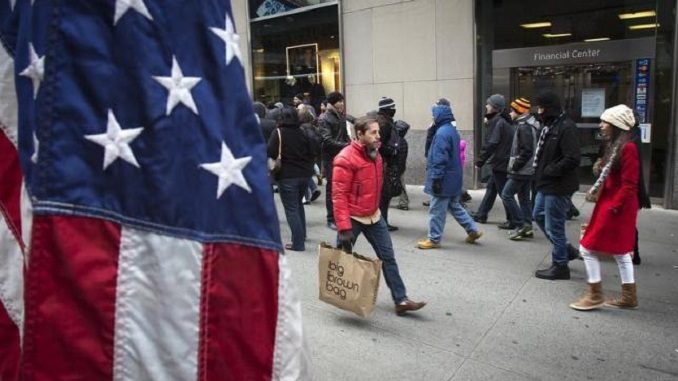
Despite heavy pricing pressures, inflation-adjusted consumer expenditure in the United States increased in March, demonstrating that people still have strong appetites and financial resources for purchasing, Bloomberg reports.
According to March Commerce Department numbers released Friday, purchases of goods and services gained 0.2% over the previous month, following a 0.1% rise in February that was corrected from an originally reported drop. Services drove the increase, while item purchases fell, indicating a change in consumer behaviors as pandemic fears fade.
The personal consumption expenditure price index, used by the Federal Reserve to determine inflation, rose 0.9% from a month ago and 6.6% from March 2021, the highest since 1982. Spending grew 1.1% month over month, unadjusted for inflation, but earnings increased more than predicted.
In a Bloomberg poll of experts, the median prediction was for a 0.1% drop in inflation-adjusted expenditure from the previous month and a 6.7% increase in the price index from the previous year.
The data demonstrate that demand is robust enough to outrun inflation, even as consumer prices continue to rise at their quickest rate in decades. Despite inflation diminishing wage growth and pushing up the cost of living, a tight job market and extra savings acquired during the epidemic have helped Americans spend.
According to a second survey released on Friday, employee expenses increased by 1.4 percent in the first quarter compared to the previous three months, marking the third straight quarter with a rise of at least 1%. Inflationary pressures are also being exacerbated by labor cost pressures, as businesses raise prices to compensate for increased compensation.
The Commerce Department data on Friday fill in some of the specifics from Thursday’s gross domestic product report, which revealed that the U.S. economy declined for the first time since 2020 in the first quarter, owing primarily to a rising trade imbalance, though consumer spending remained strong.
The inflation report will almost certainly support Fed policymakers’ calls for a half-point rate rise at their meeting next week. However, the conflict between Russia and Ukraine, as well as China’s COVID lockdowns, have heightened global economic uncertainty, making it harder for the Fed to boost policy without triggering a recession.
In addition to the headline inflation rate, which was in line with expectations, the core PCE price index, which excludes food and energy and is frequently seen as a more trustworthy indicator of underlying inflation, increased by 0.3% from the previous month. It grew 5.2% from a year ago, a small slowdown from February’s 5.3% growth.
Inflation-adjusted consumer expenditure on goods declined 0.5% in March, while spending on services increased 0.6%, equaling the highest growth since July. Economists predict merchandise demand to decline as Covid worries fade and Americans spend more on vacation, entertainment, and other services.
According to the Commerce Department, the increase in services expenditure, which was not adjusted for inflation, was broad-based and led by foreign travel, restaurants, and hotels.
In March, wages and salaries rose by 0.6%. However, after accounting for inflation, disposable personal income declined 0.4%, the most since September.
The personal savings rate fell to 6.2% in March, the lowest since 2013, showing that Americans are resuming more typical saving habits now that the federal assistance has virtually ceased.

Be the first to comment